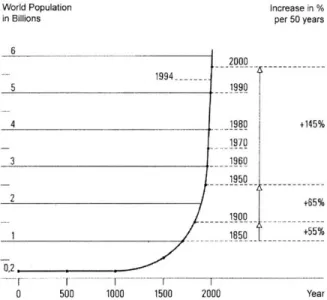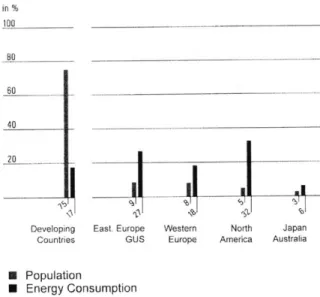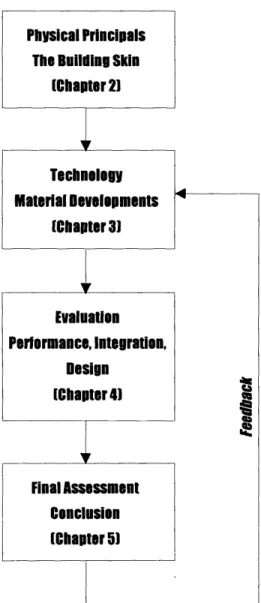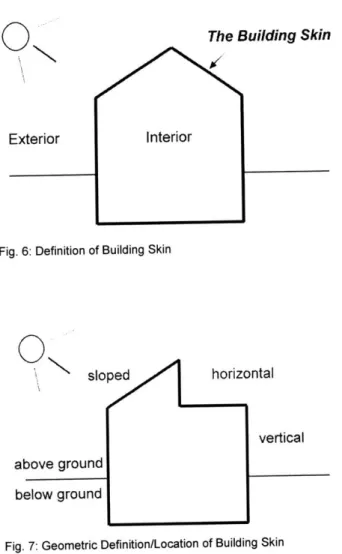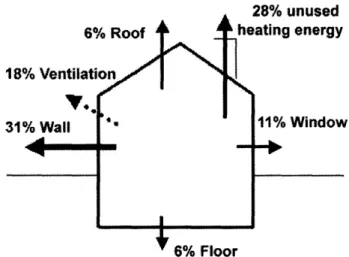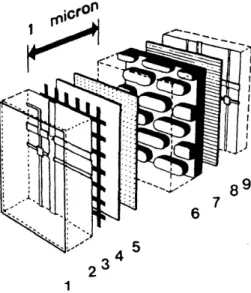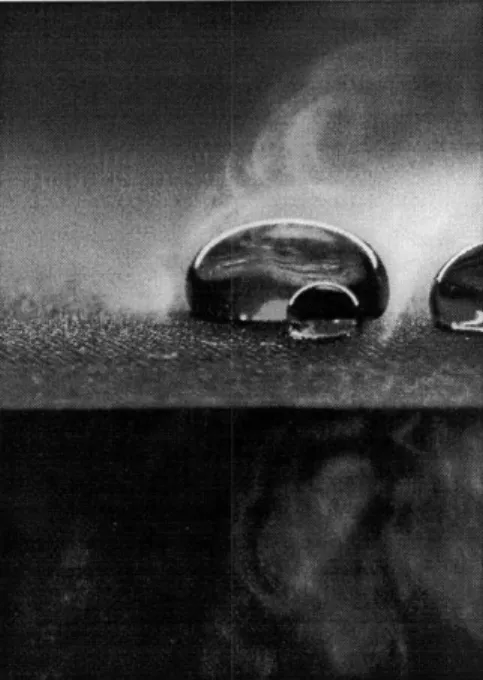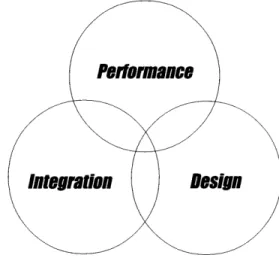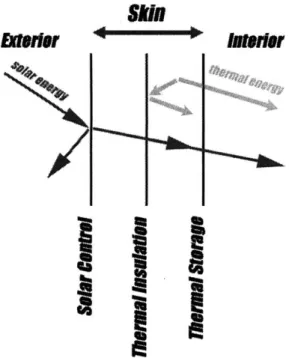Advanced Building Skins Translucent Thermal Storage Elements
by
Nico Kienzl Diplom Ingenieur Univ. Technical University Munich, 1995
,S@ADUSETS lJSTFYIE OFTECfNOLMSV
I BAI 7
99
LIBRARIES Submitted to the Department of Architecture
In Partial Fulfillment of the Requirements for the Degree of Master of Science in Building Technology
at the
Massachusetts Institute of Technology June, 1999
@ 1999 Nico Kienzl All rights reserved
The author hereby grants to MIT permission to reproduce and to distribute publicly paper and
electronic copies of this thesis document in whole or in part.
ROTCH
Signature of Author Certified by Accepted by Department of Architecture May 7, 1999 Chris LuebkemanAssistant Professor of Building Technology
A Thesis Advisor
Stanford Anderson
Chairman, Department Committee of Graduate Studies Head, Department of Architecture
ADVANCED BUILDING SKINS
Translucent Thermal Storage Elements by: Nico Kienzl
READERS
D. Michelle Addington
Assistant Professor of Architecture
Graduate School of Design, Harvard University
Werner Lang
Scientific Assistant, Researcher
Chair for Architectural Design and Construction, Professor Thomas Herzog Technical University Munich
The author acknowledges gratefully the outstanding technical and academic support and encouragement provided by both readers during the exploration of this presented thesis.
ADVANCED BUILDING SKINS
Translucent Thermal Storage Elements by: Nico Kienzl Submitted to the Department of Architecture on May 7, 1999 in partial fulfillment of the requirements for the Degree of Science Master in Building Technology.
ABSTRACT
Advances in the material sciences continue to provide designers with a wealth of new materials that challenge preconceived notions of the building envelope and its performance. These new technologies can be used to create new adaptable building skins and allow for an active interaction with the environment to reduce energy consumption in buildings. This thesis investigates the function of the building enclosure in relation to these new material developments and recent changes in the treatment of the building envelope. New glazing, insulation and thermal storage technologies are discussed in the context of their technical trajectories.
Based on this discussion of functions and technologies, a specific set of materials is selected and their combination into a facade panel is proposed. This new element is a layered facade component including electrochromic glazing, aerogel and a phase change material. The combination is analyzed for its potential as a translucent thermal storage wall in the context of American residential construction. Aspects of performance, integration and design are explored through calculations, experimental testing and the creation of scaled models and a prototype element. For this purpose an environmental test chamber has been built on MIT's campus to evaluate the performance of new facade elements.
The result of this study shows the potential for such innovative facade concepts and points towards areas of future research to make such concepts technically and economically feasible. In particular, the need for better tools to evaluate the performance of such advanced skins is identified in order to achieve successful implementation of these new technologies and ideas.
Thesis Advisor: Dr. Chris Luebkeman
Title: Assistant Professor of Building Technology
ADVANCED BUILDING SKINS
Translucent Thermal Storage Elements by: Nico Kienzl
ACKNOWLEDGMENTS
I would like to thank Professor Chris Luebkeman for his guidance and support
throughout the exploration of this thesis. His encouragement and interest in my work made my time at MIT an exceptionally rewarding experience.
Many stimulating and thought provoking discussions and helpful suggestions were provided by student colleagues at the School of Architecture, especially Kevin Settlemyre and Karl Daubmann, and I am grateful for the time I was able to share with them.
Most of all I want to thank my parents for their encouragement, support and unconditional faith in my abilities. Their love always accompanied me and helped me to achieve goals I thought unachievable.
ADVANCED BUILDING SKINS
TRANSLUCENT THERMAL STORAGE ELEMENTS
TABLE OF CONTENTS
ABSTRACT
ACKNOWLEDGMENTS
1. INTRODUCTION 8
2. THE BUILDING SKIN 14
2.1. Function of the Building Skin 19
2.2. Building Skin and Energy Balance 22
2.3. Development of Building Skins - Systems and Materials 24
3. NEW MATERIAL DEVELOPMENTS 32
3.1. Glazing 34
3.1.1. Summary 34
3.1.2. State of the Art 40
3.1.3. Future Developments 43
Gasochromic Systems 43
Suspended Particle Displays 44
Electrochromic Glazing 46
3.2. Insulation 48
3.2.1. Summary 48
3.2.2. State of the Art 50
3.2.3. Future Developments 53
Regenerative Insulation Materials 53
Gas Filled Panels 54
Aerogel 55
3.3. Energy Storage 60
3.3.1. Summary 61
3.3.2. State of the Art 63
3.3.3. Future Developments 64
Phase Change Materials 64
4. THE PROPOSED COMPONENT 69
4.1. Strategy of Evaluation 71
4.2. Description of Assembly 75
4.3. Base Case Analysis 78
4.3.1. Critical Parameters 78
4.3.2. Steady State Evaluation 80
4.3.3. Spectrophotometer Measurements 84
4.3.4. Building Heat Load Calculation 93
4.3.5. Test Chamber Measurements 96
4.4. Application and Integration Implications 102
4.4.1. System Implications 102
4.4.2. Failure Modes 105
4.4.3. Place Response 108
4.4.4. Construction 109
4.4.5. Cost Assessment 114
4.5. Design Implications 116
4.5.1. Component and Building Type 116
4.5.2 Other Uses 119
4.5.3. Appearance of the Component 120
5. CONCLUSION 123
6. BIBLIOGRAPHY 129
7. PHOTO CREDITS 132
8. APPENDIX 134
8.1. Materials Producers and Research Institutions 134
8.2. Conversion of Units 139
8.3. Explanation of Terms 140
8.4. Heat Load Calculation -Data 142
8.5. Test Chamber - Data 151
1. INTRODUCTION
Industry
Transportation
Buildings
Fig. 1: Distribution of total energy consumption by main sectors, redrawn from Behling, page 20
World Population
in Billions Increase in %per 50 years
2000 1994.- -5 1990 4 1980 +145% 3 -- -1960 1950 2 +65% 1900 1 1850 +55% 0,2 0 500 1000 1500 2000 Year
Fig. 2: World Population Growth, redrawn from Daniels, page 19
The international discussion about the depletion of fossil fuels and the related pollution caused by the combustion of these fuels for the generation of thermal or electric energy has caused an increased awareness of the impact of energy consumption for the creation and operation of buildings. Studies show that 50% of the energy production in industrialized countries is used for this sector (see figure 1)1. These developed countries account for twenty-five percent of the world population and currently use eighty-three percent of the global energy production. Thus a clear connection between energy consumption and level of industrialization can be established. Trends indicate that as a country becomes more sophisticated its energy consumption follows patterns similar to those established in North America and Europe. These trends have enormous implications when they are considered in the context of the exponential growth in the world population (see figure 2). The implications are even more ominous when one considers the economic development and with that the adoption of Western technologies in countries like China or India. Their development will potentially lead to a rapid increase of the rate of depletion of fossil fuels. This will lead to massive environmental problems if major changes in energy use patterns do not occur in the next decades.
Energy Consumption and Environmental Implications
The potential outcome of such environmental changes have been discussed and published consistently in recent years2. International conferences, such as the
1 see Daniels, page 20
2 see publications of the World Watch Institute at http://www.worldwatch.org
in % 100 80 ___ 60 40 20 Developing Countries
East. Europe Western North Japan
GUS Europe America Australia
" Population
* Energy Consumption
Figure 3: Comparison of Energy Consumption to Population, redrawn from Daniels, page 21
Refiner Acquisition Cost of
40 D. 30 U) C c0 20 E 10 0 z
Imported Crude Oil
Figure 4: Redrawn from information supplied by the United
States Energy Information Administration, http://www.eia.doe.gov/emeu/cabs/chron.html
1992 Earth Summit in Rio de Janeiro3 and in 1998 in Kyoto have been held to attempt to build consensus around strategies to counteract these developments. Unfortunately, the main industrial nations have not yet made the commitment to make significant and necessary changes in their energy policy. North America is the region with the highest energy consumption per capita (see figure 3). Energy prices are currently at a twenty-five year low (see figure 4) and the economic short term benefits for reduced energy consumption are virtually non existent. This situation reduces the argument for increased investment in low-energy technologies or strategies to improve the long-term implications for health and environment. Even if an increased environmental awareness in the population starts to create a receptive situation for these new strategies, the economic benefit for consumers and industry is not yet great enough to be a strong incentive to rapidly implement such changes. Nonetheless, some changes have been initiated by policy makers and planners, for example in Germany and Scandinavia, where the cost of energy is high and environmental changes more apparent.
In this discussion it needs to be clear that currently the main concern is the rapid increase in the C02 concentration in the atmosphere. This increase is caused by the vast and increasing combustion of fossil fuels mainly in the developed world. This increased concentration of C02 has been identified as the source for global warming and is generally referred to as the greenhouse effect. Evidence for, and potential implications of, global warming have been studied and published in the last decades. Especially these anticipated implications of global meteorological and climate changes have led to an increased awareness in the political arena
3 see Johnson for a summary of the 1992 United Nations Conference on Environment and Development (UNCED)
Image 1: Design Center Linz, Austria,
Project by Thomas Herzog and Partner
Image 2: Gap Corporate Offices, San Bruno, California,
Project by William McDonough + Partners
for the need to counteract these developments4. The building sector has been identified for its potential for significant reduction in its related C02 emissions. This reduction has the potential to be as high as ninety percent for the creation and operation of building's5.
New Strategies
Although the economic benefits are yet to be created for more significant policy changes, the dramatic prognoses of the potential outcome of our current use of energy makes it worthwhile to generate ideas and technologies to further such developments. The building industries with their high percentage of the total energy consumption, can be identified as a sector of high priority for such new strategies. A significant decrease in the energy needed to construct and operate buildings will have a recognizable impact on the environment. The building industry should be at the forefront of an heightened environmental awareness also for another reason. Since buildings are an important and integral part of our culture, changes in the technology and attitude that influence this built fabric will have intellectual and cultural implications for the people who use it. Therefore, a change in the very nature of our built world, and how one interacts with it, might be able to trigger more significant changes in the way available resources are treated. This could even effect what is expected from other products and services. The cultural context is an important factor to acknowledge in the approach to the problems being faced. Recent examples for low energy buildings showed that solutions need to be integrated into this context to be successful beyond a pure performance level. Projects designed by Thomas Herzog (see
4 see Vice President Albert Gore's book "Earth in the balance", as an example for the call for
increased political awaress and changes in energy policies see Energiegerechtes Bauen und Modernisieren, page 14-16
image 1) and William McDonough (see image 2) display how designers and e
engineers must play leading roles to transform technical concepts into feasible realities and improve the quality of inhabited spaces.
Part of the process of generating such new solutions includes evaluating existing and emerging technologies. New combinations and approaches also need to be explored. Of special interest is the rapid development of the field of material sciences. It continues to provide designers and engineers a wealth of new materials and technologies that challenge the contemporary understanding of
material properties in buildings. These advanced materials have the potential to transform the expectations of the performance of buildings as well as the appearance. The transfer of these materials from scientific laboratories into the construction industry needs to be guided by thorough studies of the advantages of these materials. The evaluation of their potential applications should serve as an important guide for new developments or research endeavors to further tailor
materials for use in the construction industry. Here again, the performance of a new technology needs to be evaluated in the context of the built environment and all related implications.
The Thesis Approach
This thesis presents such an evaluation process. Focusing on the building envelope as the physical enclosure of the building, a set of new materials is analyzed and a new enclosure assembly proposed. This assembly is evaluated
in the context of American residential construction. The implications of its use on the energy consumption, its integration and appearance are evaluated. This
study investigates the application and use of this new element within the design process and the systemic connections.
Technelhgy Material Developments (Chapter 31 Evaluation Performance, Integration, Design (Chapter 41
Fig. 5: Structure of thesis approach Physical Principals
The Building Skin (Chapter 21
Advanced Building Skins - S.M. Building Technology - N. Kienzl - School of Architecture - MIT '99 12
The second chapter introduces the building envelope, the skin that encloses buildings, its principal functions, parameters and performance criteria. The relationship between the construction of the envelope and the energy consumption of the building is outlined and examples for new approaches for the design of the enclosure are presented. This chapter serves to build the rational for the materials selected for the proposed assembly.
The third chapter discusses particular set of material developments relevant to the envelope. The historic evolution of glazing, insulation and energy storage materials are presented and their performance characteristics are investigated. An overview of the state-of-the-art of these technologies is given as well as an outlook into future developments.
A new facade panel element is is introduced in the fourth chapter. The
performance of the element is determined by means of calculations and physical testing. For this purpose a test facility was erected on MIT's campus. The rational for the test setup is presented in this chapter. Implications on the energy consumption of a residential structure, derived from the performance of the element, are discussed. The integration of the element into residential construction is evaluated with respect to construction as well as architectural design.
The fifth chapter concludes the thesis with a final evaluation of the determined benefits and challenges of the proposed element. It serves as an view into the potential for future improvements in the investigated materials and the applicability for the design and construction of the building envelope. This conclusion also attempts to answer the "so what?" question. It establishes whether the increased cost and effort in the creation of such an element is Final Assessment
Conclusion (Chapter 51
justified from an energy savings standpoint or whether other qualities of such V. assemblies could increase their feasibility and acceptance.
This work represents a research project within the Housen: MIT's Home of the
Future research consortium, which investigates the future developments in
residential architecture. It was therefore the prime concern to analyze a wide range of new developments to find future venues and trajectories for the design of buildings and to outline feasible paths corporations and research institutions could follow in order to transform the industry.
Image 3: Tent structures of Nordic nomads provide examples of
basic shelters.
2. THE BUILDING SKIN
Thus man was compelled to invent architecture in order, ultimately, to become man. By means of it he surrounded himself with a new environment tailored to his specification, interposed between himself and the world .
The ability to mediate environmental forces may be the most crucial ability of the human species and vital for its survival. There are very few locations in the world that the human organism would alone be able to exist within the climatic and atmospheric conditions. Unlike other creatures, the human body is only able to adjust its exchange of energy and matter with its environment just to a very narrow range of conditions without harm. The range is even narrower to feel comfortable. The achievement of these conditions, or finding equilibrium, is and has been the one of the primary concern of human activity.
Protection of the Body
All throughout human history two different approaches to achieve this protection
were invented and developed. The first approach was the protection of the individual body by surrounding it with layers of fabric. From the first fur coats to the space-suits and high-tech sportswear of today, the purpose of these layers was to mediate specific environmental conditions for an individual body. This approach sought to accommodate the general or specific activities that the individual needed or wanted to carry out. A wealth of different types of layers has
1 see Fitch, page 16
Image 4: A modern space suit is an example for the most
advanced form of protection of the human body.
Image 5: The difference of Micro-, Meso- and
Macro-Environments as defined by Fitch.
been available and they have been more or less consciously utilized to adjust to climate, activity and social context. These fabric coverings created a micro-environment that surrounded individuals creating comfortable contexts for the body's metabolic and perceptual systems.
Enclosure of Space
The second approach was the enclosure and protection of space through buildings or architecture. This second strategy was fundamentally different from the layers of clothing. In this case, an interior environment was created in which individual bodies, goods and processes were sheltered from the exterior and natural elements. This shelter created a meso-environment2 that mediated
environmental forces enabling social interaction between individuals and the execution of tasks and processes that defined cultures and societies. Through this physical intervention with the world, humans were able to attain the high level of sophistication in culture and technology.
The fundamental differences between clothing and architecture are their differences in physical configuration, permanence and adaptability. Despite this, they also share common aspects. The purpose of both of these strategies is to transform the continuously changing environmental conditions of our planet to an acceptable set of conditions for the human body. Thus, both of them have a direct relationship with the natural or macro-environment as well as the metabolic, perceptual and muscular/skeletal system that defines a person's physical interaction with the world. A deep understanding of this relationship is necessary to create successful solutions and a situation in which one can not
2 for a closer definition of meso- and microenvironments in this context see Fitch, page 15 Advanced Building Skins - S.M. Building Technology - N. Kienzl - School of Architecture - MIT '99
Image 6: The curtain wall of the Bauhaus in Dessau is one of the
first examples of non-loadbearing glass skins covering major
parts of a building.
only survive, but also be comfortable enough to be productive, creative and socially active.
Over the last century, ironically through vast technical improvements, the understanding of this relationship and the role of architecture in its natural context has diminished. With the availability of technical support systems to artificially condition interior spaces our buildings have become less responsive to the environment. Designers concentrated on issues that were initially secondary to the creation of efficient shelters. Thus, style, construction technologies and cost became dominant design criteria and the interior environment was adjusted
by the addition of artificial lighting and conditioning systems. The drawbacks and
inherent problems with these artificial systems become increasingly apparent with our increasing ability to monitor and evaluate indoor environments. Indoor Comfort and "Sick Building Syndrome" have become new key words in the professional vocabulary.
The Building Skin
The building skin is the ultimate barrier between the interior and the exterior. It has become less responsive to site and climate conditions over time. With the global adoption of certain technologies and style elements, like the curtain wall facade, the creation of a comfortable indoor environment became dependent upon the use of increasing amounts of energy for new technical subsystems. This development was driven by a variety of technical, economic and cultural factors. It has also led to an increased detachment of building design from actual environmental conditions. Just in recent years, initiated by the oil crisis in the 1970's and an evolving understanding of the implications of the use of these technologies, designers have started to question this strategy and to shift their Advanced Building Skins - S.M. Building Technology - N. Kienzi - School of Architecture - MIT '99
Image 7: The environmental influences that affect the design of
the building skin as illustrated by Fitch
attention back to the design of buildings that respond to local climatic conditions. Many contemporary works attempt to reassess the relationship between the exterior and interior environments and the building's configuration.
These "new" strategies return to the initial understanding of the building as a mediator of natural conditions. There is the intention to use these climatic conditions in creating the desired interior situation. In doing so, aspects of energy consumption are addressed as well as issues of indoor air quality, visual comfort,thermal comfort, and general perception as well as experiential qualities. Understanding the conscious interaction between the individual and the environment via the medium of the building becomes increasingly critical in the building design.
In this context, the building envelope, the skin and enclosure of the building, becomes increasingly important. It is, with the structural system, the most important sub-system in a building since it controls the flux of energy and matter into and out of the protected space. It becomes the key element for responding to environmental conditions. These conditions can be separated into two types: those that change and those that are constant. Special emphasis is placed on facades and materials which can change their physical properties in response to
macro environments. Important aspects of a building's success lie with its interaction with local conditions (i.e. the position of the building, the shadows of neighboring buildings or the geographic conditions). These aspects should have a great influence on the choice and orientation on the site, as well as on the configuration of the structure. However, the great majority of environmental forces in most climates are constantly changing. There are diurnal ambient temperature swings, changing light conditions due to changing meteorological or seasonal variations and varying amount of precipitation or wind. The physical forms of buildings are, unlike clothing, not easily reconfigured. Their ability to
adjust to changing environmental conditions is limited. Nonetheless, the building skin can be designed in a way that allows for a certain amount of transformation and variation to adapt to these changes. Thus, the variation of the buildings response brings the larger environmental context back into the forefront of the perception of the inhabitants on a daily basis.
The overriding paradigm for a successful design must be found in the thorough investigation of local conditions and the development of a site specific design solution. Unfortunately, most architects and engineers have lost much of their ability to find such solutions. Their education and practice tends to encourage the design of buildings that use energy to modify, instead of adapting to, their local conditions. Even when designers try to work towards the goal of a responsive building they often fall, due to lack of knowledge or resources, into the trap of copying existing solutions from other part of the world. Often these solutions are not appropriate for their situation and the building again requires large amounts of energy to counteract an inappropriate strategy. This situation is especially difficult when solutions are copied for their visual appearance. For example, many of the current double glazed facade systems in Europe are applied indiscriminately throughout the continent with a serious lack of understanding of the performance implications of such a technology. In recent years, the acknowledgment of the importance of an appropriate design strategy and its relevant information have led to research efforts that build a framework in which such design process can be successfully developed3.
Therefore, a successful application of new technologies to the building envelope demands an understanding of the functionality of the envelope. Thus, it is
3 see in this context the Sol-Arch-Data project for the integration of research results and scientifc
findings into the design process and architectural education. This project was carried out by the
chair of Prof. Thomas Herzog at the Technical University Munich and supported by the European Union.
The Building Skin
Interior
Fig. 6: Definition of Building Skin
0
sloped horizontal
]lvertical
above ground below ground
Fig. 7: Geometric Definition/Location of Building Skin Exterior
4 see Wittwer
Advanced Building Skins - S.M. Building Technology - N. Kienzl - School of Architecture - MIT '99
necessary to clarify the functional parameters under investigation in each case. These are mapped with associated performance parameters in this work with their implications on the overall system performance.
2.1. Function of the Building Skin
A study of the building skin should clearly define the aspects of the envelope
under investigation. The building envelope, as the barrier between the interior and exterior, includes all surfaces that make up this boundary and is continuous in all orientations (see figure 6). This includes surfaces below and above ground as well as horizontal and vertical surfaces (see figure 7). These surfaces are exposed to very different environmental forces and therefore have very different requirements. Even the same group of surfaces, such as the vertical walls of a building, have different constraints based on their orientation and the function of the interior spaces. These requirements need to be addressed individually for a successful treatment of the building envelope,. The transformation of one surface into another is in many cases the most difficult aspect of the detailing and construction.
It has been found that about forty percent of the primary energy consumed in industrialized countries is used to produce low temperature thermal energy for heating dwellings and industrial buildings, domestic hot water and low temperature industrial process heat4. In this context, it becomes clear that the reduction of heat loss of this low temperature energy would have a major impact on overall energy consumption. Thus, solutions to decrease the heat loss and to increase the use of solar thermal energy become very important. In a typical residential construction, around sixty percent of the primary energy is lost
6% Roof 18% Ventilal 31% Wall 28% unused 28% unused heating energy 111% Window ' 6% Floor
Fig. 8: Distribution of primary energy loss in typical residential
construction, redrawn from Energiegerechtes Bauen
through the vertical walls, including opaque and transparent elements, and ventilation. Energy loss through roof and basement at twelve percent is comparatively minor (see figure 8)5. The high percentage of energy lost through the vertical wall can be explained by the larger overall area of the wall compared to the smaller areas of the roof or floor in standard building design. Also, the wall is normally not shielded by buffer zones like unheated cellars or attics in the case of roofs and floors.
The criteria that affect the building envelope can be organized into six categories:
Building Function Location/Exposure, Surrounding Conditions, Functional Components, Structural Requirements, Energy and Environment6. These groups
contain a complex set of sub-issues. Performance requirements for each of these issues have been defined by common standards or experience. These standards define the performance of the building's needs, such as protection against structural or moisture damage, and the needs of the inhabitants. In particular, the requirements for indoor comfort of the inhabitants have led to an exploration of the range of conditions that are acceptable or desirable7.
The thermal performance of the envelope becomes the predominant factor in reducing the energy consumption of buildings. In addition, solar radiation can be used to reduce the heating load as well as the need for artificial lighting. Both thermal environment and solar radiation are forces subject to significant diurnal, meteorological and seasonal changes. So far, attempts to deal with these forces have been limited to designing for a worst-case scenario. Limited success has been achieved in creating responsive technical solutions as discussed later in this text.
5 as published by the German Bundesarchitektenkammer in Energiegerechtes Bauen und Modernisieren
6 see definition and examples in Ragonesi, page 6-7
for an early example and an indepth discussion of these conditions see Fitch
Proposal of Mike Davies for the "polyvalent wall":
1 Silica weather skin and deposition substrate
2 Sensor and control logic layer - external
3 Photoelectric grid
4 Thermal sheet radiator /selective absorber
5 Electro-reflective deposition 6 Micro-pore gas flow layers 7 Electro-reflective deposition
8 Sensor and control logic layer - internal 9 Silica deposition substrate and inner skin.
Fig. 9: Proposal for a multi-layered building skin by Mike Davies, from Campagno
This thesis focuses on the exploration of potential improvements to the thermal c and luminescent performance of the building envelope based on the selection (N and combination of new materials. Although issues like ventilation, filtering of environmental particles, protection against intrusions and other aspects of the building envelope mentioned before are important, they are not explored in this discussion. This investigation explores a non-load bearing element so the issue of structural performance is not addressed.
This thesis proposes the development of an element that allows for a new understanding of the enhanced ways that the building skin can function by allowing for changing material properties and the use of high performance materials. The idea of the building skin as a functional skin, similar to the adaptive skin of a chameleon, is the driving concept for this work. It has been strongly influenced by the search for a polyvalent wall, a wall that is able to adjust to many environmental conditions, as proposed by Mike Davies8 (see figure 9). His scenario of the performance of an imaginary wall is still one of the strongest visions for the wall:
Look up the spectrum-washed envelope whose surface is a map of its instantaneous performance, stealing energy form the air with an iridescent shrug, rippling its photogrids as a cloud runs across the sun; a wall which as the night chill falls, fluffs up its feathers and turning white on its north face and blue on the south, closes its eyes but not without remembering to pump a little glow down to the night porter, clear a view-patch for the lovers on the south side of the level 22 and to turn 12 percent silver just after dawn.9
8 see Davies for an introduction to the concept of polyvalent walls
9 see Davies
2.2. Building Skin and Energy Balance c4 4 The goal of heating and cooling is the creation of a comfortable indoor climate. The parameters that define a comfortable indoor situation dependent on a variety of factors. Apart from physiological aspects like activity, clothing and metabolism of the occupant, other aspects like time of day, season and even cultural preferences play an important role10. The human body uses all three forms of
heat transfer to keep the body at a constant temperature and its metabolism intact: radiant exchange through the skin with other surfaces, convection with the surrounding air, and conduction via evaporation. These processes are affected
by surface temperatures of the surrounding elements as well as temperature,
speed and humidity of the air. At higher temperatures, humidity becomes increasingly important, since evaporation becomes the main form of heat transfer and is directly affected by the relative humidity. These factors shape the range of conditions that are ideal for human comfort. Energy consumption for heating and cooling is directly connected to how narrowly this range is defined.
The maintenance of a building's energy balance relies on internal and external factors in order to determine the actual needs for heating and cooling. Main factors are the heat generated by occupants and equipment, heat lost or gained via convection, ventilation and conduction through the building skin as well as radiant heat transfer with the environment. The optimal result of such an energy balance would be the zero energy house where all gains and losses balance to result in zero at all times, so that no energy needs to be supplied or extracted by heating and cooling processes. Since all of these internal and external factors are subject to continuous change, the zero energy state is almost impossible to achieve.
10 as an early example see Fitch, for a more recent discussion see Ragonesi
Achieving a low energy balance is especially difficult if a building cannot adjust to c4
changing conditions and is not able to absorb and release energy at different times. This flexibility has been applied through the introduction of variable elements and thermal storage devices". Variable elements can be operable openings that allow for a change in ventilation, blinds that allow for a variation in radiant energy transfer or shutters that decrease the convective heat transfer. The storage of thermal energy can be achieved through the introduction of elements with a high mass that need to absorb large amounts of thermal energy to raise their temperature. This strategy can be used for the building envelope as well as for the internal mass of the building by introducing heavy mass building elements. Based on the time lag in such elements, thermal energy can be stored to mediate diurnal temperature swings.
In most climates these two approaches can be effectively combined to reduce the energy consumption of buildings. For example, in a summer situation cold night time air can be used to cool down thermal mass for the day and blinds can facilitate the reduction of solar input during the day. The building skin is in this context the most critical building element. Except internal loads through occupants and equipment, all aspects of the energy balance are related to the performance and operation of this boundary. If the performance of the envelope is not sufficient to create the desired indoor environment, external energy must be supplied in order to heat, cool and ventilate. Thus the nature of the skin of a building is directly related to the sizing, layout and energy consumption of most other building systems and improvements to the skin can have far-reaching implications for the building design and its employed technology.
11 for a history of such strategies see Butti
2.3. Development of Building Skins - Systems and Materials
Most buildings are designed to use standard technologies for the construction of the building envelope which are based on traditional means and methods. These technologies have improved slowly in recent years with bigger jumps found where codes or regulations increased the prescribed requirements. Designers usually use these technologies with little knowledge about potential improvements and the principles behind them. Unfortunately, these designers make up the largest group of the profession. Even through better implication of existing technology the energy consumption of buildings could be reduced. However, most designers and clients are more concerned with issues of initial cost, speed of construction, reduced planning time, and appearance. Only a small group of designers, clients and engineers are interested in stepping beyond established solutions to search for innovative design solutions to pressing environmental issues. These designers face the difficult task of developing better solutions at competitive cost and on schedule. The design cost, including the cost of engineers, researchers and producers, associated with these developments is a major concern and obstacle. Thus, the development of new solutions primarily occurs with signature commercial buildings designed by firms with a strong background in technology. Hopefully, the lessons learned in these projects will provide guidance for projects with smaller budgets and establish new means and methods for the industry.
During the last two decades interesting new solutions for the design of the envelope have been generated in Europe. The innovative role Europe plays in this development is only partly caused by a different approach to building cost and a bigger environmental awareness. Also, these construction and subsequent publication of these constructions established a strong aesthetic trend. The more prominent examples of these projects often focus on special aspects of Advanced Building Skins - S.M. Building Technology - N. Kienzl - School of Architecture - MIT '99 24
Image 8: glass louvers at the construction office Gartner, as an
well executed example of exterior shading devices
performance. In the context of this thesis, some of these examples are c mentioned to give an overview of new design directions and to provide some background for potential developments in residential design. These examples have been grouped together by the areas in which they were intended to make the biggest improvements.
Reduction of Solar Gain
The biggest problem in commercial buildings is associated with excessive solar gain that results in an increased cooling load and glare. A successful example for the introduction of exterior louvers as shading devices is the Construction Office Gartner, designed by the architecture firm of Kurt Ackermann12. This building uses semitransparent and partially reflective glass louvers on the exterior to control solar heat gain and enhance visual comfort. The coating of these louvers not only provides shading but also allows a degree of visual connection with the outside through the louvers. Another effect is the reflection of light into the building. The position of the louvers allows for light to be reflected against the ceiling of the office space and to produce a uniform light distribution even in areas in the depth of the building. The louvers are controlled by a central building system and react to the changing position of the sun. This system is very well integrated into the overall building design and provides interesting aesthetic effects by the varying reflections on the louvers. Such systems are advantageous because the heat is kept outside of the building envelope through the exterior location of the shading devices. The disadvantages of this system are typical for most louvers systems and are the high maintenance and installation costs.
12 see Peters and Ackermann
Image 9: shading devices of the Arab Institute, Paris
Image 10: Demonstration of the angular dependent transmission
of micro louvers
To reduce this exposure of the shading devices to rain or wind some attempts have been made to integrate reflective shading elements into the building envelope. An interesting but also problematic example for such an approach is the facade of the Arab Institute in Paris, designed by Jean Nouvel13 (see image bc). Here the shading elements have the form and function usually found on a different scale in camera shutters. These reflective shutters are enclosed within the glazing of the skin and are therefore not exposed to the environments. They are mechanically controlled and can adjust to exterior light and indoor requirements by a gradual opening and closing of the shutters. Conceptually this idea is very interesting because it creates a self-contained responsive facade. The disadvantage is that it is a very complex device that is prone to mechanical failure. Also, the unique nature, high complexity and number of parts of the system makes it an extremely uneconomical solution. If a similar concept could be realized with a simpler construction and at lower cost this concept would be an interesting alternative to exterior shading elements.
A similar desire to moderate solar gain within the skin has led to the development
of materials and systems that reflect certain directions of the solar radiation. These systems of fixed, angular selective shading devices usually do not allow for changing properties. This reduces their effectiveness but also decreases their cost and chance of failure compared to mechanically operable elements. The most striking example of such technologies are micro sun shielding louvers (see image). These aluminum coated plastic grids are designed in a way that they reflect direct sunlight and allow for diffuse light to pass. These grids can be enclosed in the depth of conventional double glazing and are highly effective in the reduction of cooling loads. The development of this technology was led by the lighting engineering firm of Christian Bartenbach in Austria, the design Firm
13 see Campagno, page 88-89
of Thomas Herzog and Siemens Beleuchtungstechnik as producer of the
$
elements. The first installation of this technology was in the roof of the Design Center Linz, designed by the firm of Prof. Herzog14 in which the whole curvedroof structure of a extensive conference and exhibition center was covered with these composite elements. The disadvantage of this technology is that the units are neither transparent nor uniformly translucent but show a complex pattern of
reflections. This reflection makes the system a very interesting solution for skylights and roofs but very difficult for vertical walls.
Natural Ventilation
The ability to naturally ventilate interior spaces is taking on a larger significance as clients demand solutions to overcome the comfort and energy problems associated with fully air-conditioned buildings. To accommodate this desire to be able to open a window and let air in is a complicated task in the sophisticated systems current buildings represent. Especially in commercial high rise buildings which are exposed to higher wind pressures on the facade this has not been a technical possibility until now. In recent years naturally ventilated double layered facades have been introduced to break down the wind speed and to create a controlled air pressure situation. This concept has seen many variations in the way the two layers are arranged and how the airflow is controlled and distributed. In the example of the Duesseldorf City Gate Building, designed by the architect Petzinka, Pink and Partner a very deep version of such a double facade has been chosen15. The outer layer of this sixteen-story office building consists of
large panes of single glazing while the inner layer is made of double-glazing in
Image 11: Architectural Model of the City Gate Building in 14 see Herzog, pages 145-155 and 201
Duesseldorf, demonstrating the transparent double envelope 15 see Herzog, page 124-125
Image 12: close up of architectural model of the City Gate Building in Duesseldorf, displaying the continuos buffer zone
within the double layered facade
Image 13: section and elevation Building
of envelope for the City Gate
wooden frames. The two layers are spaced approximately 1.25m and create on each floor a continuos buffer space around the building. Controlled by a central building system mechanical ventilation openings control the air intake into this buffer on each floor and the inhabitants can open their interior windows individually to condition their offices to their needs. This system also serves to break down the noise from the highway traffic the building is exposed to and contains reflective shading devices within the buffer. The designers claim that the building is in this way able to operate within a temperature range of -12*C to +
280C without additional energy for heating and cooling.
The advantage of such an arrangement of the two layers is that through the continuos buffer around each floor, fresh air can be supplied to all sides of a
building and through the correct use of openings in respect to outside conditions even cross ventilation of the buffer is possible. The disadvantage is the increased cost and increased complexity of such systems. However through improved controls and a cost clever selection of detailing and materials this approach is
becoming a feasible solution.
A similar approach, even with a very different arrangement, is the office tower for
the Commerzbank Headquarters in Frankfurt/Main, designed by Sir Norman Foster and Partners16. In this sixty story high-rise two different schemes of natural ventilation are used. One is the large scale cross ventilation of open gathering spaces and the central core throughout the building. The second approach is more relevant to the here discussed topic and is the natural ventilation of the individual office spaces through a layered window arrangement. In the construction of the windows a single pane of glass is mounted in front of a conventional double pane window with 0.15m spacing. This frame of the outer glass pane has small openings on the top and bottom of each window to allow
16 see Herzog, page 108-109
continuos air supply into this buffer space. Within this gap small reflective retractable blinds are installed as shading devices. Each floor and window is separated and there are no mechanically controlled devices. This arrangement serves to break down wind speed and noise and protects the fragile louvers . The advantage of this system is that it is comparatively simple and intuitive and does not need any extensive controls which reduces cost and complexity. It is anticipated that the use of these windows increase the indoor comfort by giving the inhabitants access and direct control of their air supply. The disadvantage might be that this system can not counteract differential pressures on different sides of the building and positive and negative pressures on the facade can create very different indoor situations.
Through the use of new computational fluid dynamics software and increased
Image 14: photomontage of computer rendering of the computational performance these complex assemblies can be simulated and
Commerzbank tower into the skyline of Frankfurt, clearly
displaying the large scale facade setbacks for cross ventilation strategies can be tested before they are applied. These tools supplement the
traditional means of wind tunnel testing to predict the airflow in and around buildings at much lower cost.
Thermal Mass / Solar Storage Systems
The use of new insulation materials, discussed later in this text, led to the design of projects that made use of brick or concrete construction to capture and store
UIt $1a f 4 1 ;,voIt
solar energy to reduce the internal heating load. The use of these technologies for smaller and heating dominated buildings and regions has produced some interesting results and showed new trajectories for solar architecture. In this new approach towards solar architecture the traditional image of solar buffer zones Image 15: section of office space in the Commerzbank tower
and wintergardens is replaced by compact assemblies.
An example for such a new project is the Hostel for Youth Educational Institute in cO Windberg, Germany, designed by the Firm of Prof. Herzog17. Here, the south
facade is divided into alternating vertical segments of windows and opaque walls. The opaque elements are an assembly of sand-lime brick with an exterior layer of translucent insulation. This assembly allows for the gain of solar energy and the mass of the wall creates a time lag into the evening hours when the heat is needed inside the living spaces on the interior. To prevent the wall from overheating during the summer months, exterior louvers can be lowered to shade the walls. This situation creates and interesting shift in perception, since in a conventional wall one would not expect shading devices in front of opaque wall elements.
The advantages of such a system are clearly the low cost and the potential
eeaments n ront of opaque wall e n udberg withw floors energy savings. Disadvantages are mainly in the need for exterior shading device and the related cost, control and maintenance issues.
Acoustic Properties
Especially in inner city areas the use of advanced facade technology has been used to reduce the noise from traffic or other urban or industrial sources. This noise is in many projects a primary concern and prevents the opening of the facade to the exterior. The use of additional layers in the building skin has been employed in recent projects to reduce this form of environmental impact. A recent example of such a strategy is the facade design of an office and housing project in Munich, designed by the firm of Steidle + Partner18. Here the north and west
facade of a larger building block faced a very noisy inner city street and were
17 see Herzog, page 66-67
18 see Herzog, page 122-123
clad with an additional layer of glazing. These glass panes, mounted in full story height steel frames, are located at a distance of approximately 0.4m from the main facade and serve as an acoustic buffer. This buffer is continuos over large parts of the facade and can be used for natural ventilation purposes as well. Usually such a configuration of a second layer is problematic since the heat that is generated in the double skin might create undesirable warm inside temperature on the top floors. In this special case, the orientation of the building and the moderate climate allowed for this configuration.
The advantage of such an increased acoustical performance of the building envelope can lead to reduced energy needs for mechanical systems. The high cost of such a facade however seldom justifies such a solution for acoustical reasons alone. In combination with natural ventilation and improved shading schemes these systems can become feasible solutions.
Image 17: construction mock-up for the double layer facade of the discussed office building in Munich
3. NEW MATERIAL DEVELOPMENTS
The creation of buildings is determined to a great extend by the technical choices available to solve a given design problem. Materials and production technologies are therefore primary influences on the design and performance of architecture. Throughout history it can be observed how new materials and technologies have been used to create new solutions for buildings'. These technical capabilities not only changed the way buildings are constructed but they also altered the function and form of buildings and became thus an expression of the abilities of a society and time periods2.
It is important to clarify the relationship of material to manufacturing technology. As physical matter from the environment, materials need not be invented. What is needed are innovative ways to manipulate existing materials into new configurations. Therefore everything that is referred to as a "new material" is based on a new technology to create new configurations or compositions. In the analysis of so-called "new materials" it is thus important to look at what the actual components of a new configuration are and what processes are required to create them. Both of these aspects are especially relevant if new materials are analyzed for their environmental impact. For example, the energy used for the creation of a new material has to be taken into account to assess the overall energy balance of a construction3. Also, the ways in which the ingredients of a material can be separated or reconfigured for future use is critical to assess its see Elliot on various examples for the development of construction materials and systems, and
their influence on architecture.
2 for example the change in building heights that has been made possible through the invention of
the elevator, see Elliot
3 see Steiger, SIA Dokumentation D0123
value in the larger cycle of matter. This process of analysis is complex and difficult especially with new materials. Knowledge about the technology involved in the creation of new materials is often the main asset of a company. Therefore information is very reluctantly published in detail and the detailed assessment of
new technologies is difficult before it is officially tested and standardized.
Since the beginning of the industrial revolution, the knowledge of materials and production technologies has increased dramatically and continues rapidly. In the mass production of goods that was made possible by the industrial revolution, this knowledge provided a competitive advantage for the producer. Thus a strong incentive was created to further this knowledge in order to produce cheaper, faster or better products. The fast successes in this development and ever-growing financial benefits made research in material sciences a vital aspect of economic growth. Advancements in the research of material sciences made it possible to design materials for certain applications in ways that are unprecedented. This enables designers to choose from a wide range of materials to solve design problems. Such a wealth of materials can be created that there is a need to specify up-front what improvements are desirable. The designer is asked to clarify material properties for a certain performance so that research can try to match these properties with new developments4.
To recognize the potential of new materials it is important to understand the historical background, physical characteristics and technologies involved. This understanding serves as a basis for design decisions, as well as for the development of realistic expectations in the performance of new technologies. For the building skin three groups of materials of particular importance are discussed in the following section. These groups have been identified for their ability to transfer (glazing), block (insulation) or store energy (storage materials).
4 see for example the design of new thin film or polymere technologies.
Each of these material groups is an intensive field of study and is just briefly V. summarized in this text. However emphasis is put on the discussion of future developments and especially on the discussion of one key technology in each of the groups as an introduction to the proposed facade component.
3.1. Glazing
Historically glass has been of particular importance in the construction of buildings for its ability to transmit light and solar radiation into buildings while providing protection from external elements. This ability allowed for enclosures that are naturally lit and heated by solar energy. Glass has evolved through major changes in its production technologies in the last one hundred and fifty years making it a widely available and affordable building material. These changes have not only increased its range of applications but also inspired designers to create fundamental changes in building design. In the following text a short summary of its history and performance parameters is presented.
3.1.1. Summary
Initially discovered 4000 years ago in the eastern Mediterranean as a side product in the creation of pottery, glass was produced as a container for liquids and as jewelry in Egypt and Greece. It is assumed that the origin of glass in these hot climates prevented its early adoption as a material for the covering of wall openings. With the migration of glass production into colder climates of the Roman Empire its potential as a building material was discovered. Based on techniques adopted from the production of flat glass bowls, thin glass panes were produced to cover windows. Rich patrician Romans used glass to enclose
Image 18: illustrations of the prodcution of crown glass
Image 19: King's College Chapel, Cambridge, 1446-1547, as
example for the extensive use of glass in gothic architecture
their buildings and to create small conservatories to grow plants. The production technique at that time was to melt silica sand and other ingredients and then to 1 cast or blow the liquid glass into desired shapes. Through this technique a very uneven and thick glass was created.
The Growing Demand for Glass
With the spread of the Roman Empire to the north the use of glass increased and was adopted for the transparent envelope elements for buildings all through Europe. Important in the production of glass was the quality of the base material, silica sand, the extremely sophisticated labor involved, and the availability of large amounts of energy for the melting process. This led to the creation of glass centers throughout Europe where the resources were available and where the tradition of glass manufacturing provided skilled workmanship. The need for bigger and more even panes of glass led to the development of the crown process and further developments in casting glass. For the crown process a molten drop of glass was rotated in a way that the centrifugal forces would create a disk of glass. These processes allowed for bigger glass panes but still had the problem of uneven surfaces. To create a smooth surface it was necessary to polish the glass after it was cooled down. Both processes increased the maximum sizes of glass panes but were extremely labor and time intensive. Therefore Glass became an expensive building material that was used for special buildings like cathedrals and palaces.
During the Gothic period with its dematerialization of the stone wall glass was used for the first time as a major part of the building envelope. Here colored glass was used not only to protect the interior but also as a design element to heighten the spatial experience. This increased the demand for glass and led to Advanced Building Skins - S.M. Building Technology - N. Kienzl - School of Architecture - MIT '99 35
Image 20: cutting process of cylinder glass
Image 21: mechanical rolling process of liquid glass
the development of the cylinder process, whereby glass was blown into the V shape of a large cylinder whose ends where cut, then slit longitudinally and V
ce
flattened. This process allowed for smoother surfaces and higher production output of glass panes.
The Industrial Production of Glass
In the following centuries glass became more and more a product for profane architecture. With the introduction of cast iron, steel and reinforced concrete into building construction the traditional load bearing wall started to disappear and glass became a material of choice for the enclosure of buildings. Especially in the United States where new cities literally exploded the demand for glass skyrocketed and producers tried to find solutions to mechanically produce glass. In 1896 John Lubber in Pittsburgh, imitating the traditional cylinder process successfully created the first of these machines. A couple of years later in Belgium Emile Fourcault developed a machine that approached the problem from a new angle pulling large panes of glass out of the glass molt over a series of rollers. This process reduced the production time and simplified the process but created a lower quality glass and still required intensive polishing of the panes. In the United States the Libby Owens Sheet Glass Company developed a similar machine in 1905.
These new technologies made large quantities of glass available and glass became an economically feasible building material for almost every purpose. Designers started to see this new availability of glass as an opportunity and the Modern Movement in architecture was strongly influenced not only by the material glass but also by the fact that industrial production made the extensive use of glass possible. The development of designs of fully glass-clad buildings Advanced Building Skins -S.M. Building Technology - N. Kienzl -School of Architecture -MIT '99 36
